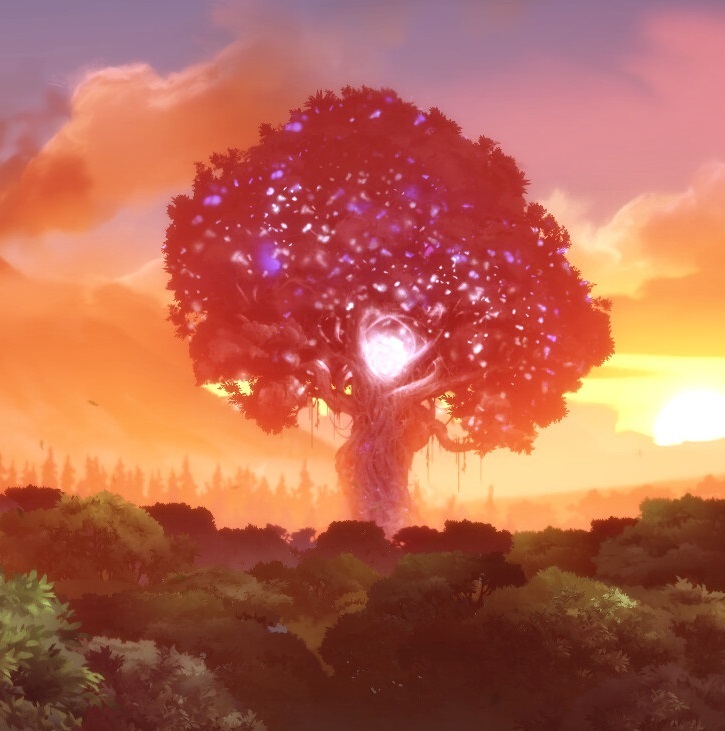An image of the wildfires in Rhodes, taken on July 23rd, showing the flames and the plume of smoke.
Greece, in late July, faced a heatwave in which over 8 million people experienced temperatures about 41C, with some areas reaching above 45C - all in all, both the longest heatwave in Greek history, as well as some of the highest temperatures on record.
Due to these high temperatures, Greece was then struck by hundreds of wildfires this summer, affecting nearly 200,000 hectares. About half of the total burned area was in the north-east of Greece, in the Dadia national park near the city of Alexandropoulis - the single largest blaze that the EU has recorded. Other parts of the country were also struck, such as Attica, Magnesia, and islands like Corfu and particularly Rhodes; the last one prompted an evacuation of 20,000 people, the largest evacuation operation the island had ever seen. Of course, this is just one country of many that have been caught in the European wildfires this year, of which the total burned area approached 500,000 hectares - the only consolation is that this was less than last year.
Greece, Bulgaria, and Turkiye were impacted in early September by flooding caused by massive storms bringing a deluge of water - in Greece, this mainly impacted Thessaly, in the centre of Greece.
Luckily for Greece, despite being a very earthquake-prone country, they have experienced no significant quakes lately to round out the four (I hope I haven't jinxed it) - though, of course, earlier this year, a major earthquake struck nearby Turkiye, killing 60,000 people and injuring 120,000.
The Country of the Week is Greece! Feel free to chime in with books, essays, longform articles, even stories and anecdotes or rants. More detail here.
Here is the map of the Ukraine conflict, courtesy of Wikipedia.
This week's update is here!
Links and Stuff
The bulletins site is down.
Examples of Ukrainian Nazis and fascists
Examples of racism/euro-centrism during the Russia-Ukraine conflict
Add to the above list if you can.
Resources For Understanding The War
Defense Politics Asia's youtube channel and their map. Their youtube channel has substantially diminished in quality but the map is still useful.
Moon of Alabama, which tends to have interesting analysis. Avoid the comment section.
Understanding War and the Saker: reactionary sources that have occasional insights on the war.
Alexander Mercouris, who does daily videos on the conflict. While he is a reactionary and surrounds himself with likeminded people, his daily update videos are relatively brainworm-free and good if you don't want to follow Russian telegram channels to get news. He also co-hosts The Duran, which is more explicitly conservative, racist, sexist, transphobic, anti-communist, etc when guests are invited on, but is just about tolerable when it's just the two of them if you want a little more analysis.
On the ground: Patrick Lancaster, an independent and very good journalist reporting in the warzone on the separatists' side.
Unedited videos of Russian/Ukrainian press conferences and speeches.
Telegram Channels
Again, CW for anti-LGBT and racist, sexist, etc speech, as well as combat footage.
Pro-Russian
https://t.me/aleksandr_skif ~ DPR's former Defense Minister and Colonel in the DPR's forces. Russian language.
https://t.me/Slavyangrad ~ A few different pro-Russian people gather frequent content for this channel (~100 posts per day), some socialist, but all socially reactionary. If you can only tolerate using one Russian telegram channel, I would recommend this one.
https://t.me/s/levigodman ~ Does daily update posts.
https://t.me/patricklancasternewstoday ~ Patrick Lancaster's telegram channel.
https://t.me/gonzowarr ~ A big Russian commentator.
https://t.me/rybar ~ One of, if not the, biggest Russian telegram channels focussing on the war out there. Actually quite balanced, maybe even pessimistic about Russia. Produces interesting and useful maps.
https://t.me/epoddubny ~ Russian language.
https://t.me/boris_rozhin ~ Russian language.
https://t.me/mod_russia_en ~ Russian Ministry of Defense. Does daily, if rather bland updates on the number of Ukrainians killed, etc. The figures appear to be approximately accurate; if you want, reduce all numbers by 25% as a 'propaganda tax', if you don't believe them. Does not cover everything, for obvious reasons, and virtually never details Russian losses.
https://t.me/UkraineHumanRightsAbuses ~ Pro-Russian, documents abuses that Ukraine commits.
Pro-Ukraine
Almost every Western media outlet.
https://discord.gg/projectowl ~ Pro-Ukrainian OSINT Discord.
https://t.me/ice_inii ~ Alleged Ukrainian account with a rather cynical take on the entire thing.
Last week's discussion post.


With all this talk about Nazis I was reminded of the worst article I have ever read. The (so-far) undisputed crown of dipshittery. The take to which all other bad takes aspire.
Re-reading it now, it still makes me feel physically ill.
Mariupol Could Be the Thermopylae of the 21st Century, April 21st, 2022.
expand
give Andreas Kluth a rifle and a parachute and drop him into Robotyne
Thank you for sharing, I think I'm going to throw up.
Mariupol could be thermo piles